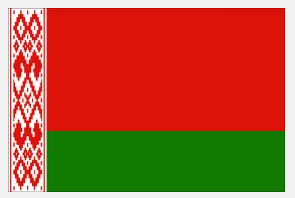The Secretariat of the Ramsar Convention on Wetlands (Ramsar Convention) has reported that the Government of Belarus has designated four Important Bird Areas as new Wetlands of International Importance, totaling an area of over 100,000 hectares.
 15 April 2013: The Secretariat of the Ramsar Convention on Wetlands (Ramsar Convention) has reported that the Government of Belarus has designated four Important Bird Areas as new Wetlands of International Importance, totaling an area of over 100,000 hectares.
15 April 2013: The Secretariat of the Ramsar Convention on Wetlands (Ramsar Convention) has reported that the Government of Belarus has designated four Important Bird Areas as new Wetlands of International Importance, totaling an area of over 100,000 hectares.
According to the Ramsar Secretariat, the first site, Duleby Islands-Zaozerye, supports various species of birds and mammals, as well as national red-listed plant communities. It also plays an important role in water purification and supply for the rivers of the Dnieper basin and recharges the underground hydrological systems. Activities carried out on the site include agriculture, forestry, mowing and recreation. The ecological character of the wetland is threatened by logging, poaching, pollution, eutrophication and radioactive contamination.
The second site, Morochno, is an ecological corridor for many nationally-threatened and endangered species. It plays a role in the maintenance of water quality and storage in the region. Activities carried out on the site include forestry, logging, hunting and recreation. Threats to the site include land reclamation and drainage, fires, poaching and peat extraction.
The third site, Stary Zhaden, plays an important hydrological role in water quality and storage. Activities carried out on the site include forestry, farming, recreation and hunting. Threats to the site include logging, fires, drainage, poaching, recreational disturbances and significant radioactive contamination.
The fourth site, Vigonoshchanskoe, is a large forest-wetland complex situated at the watershed of river basins of the Black and Baltic seas. The site plays an important hydrological role in the region and regulates regional climate by mitigating fluctuations in temperature and humidity. Activities carried out on the site include fishing, hunting, berry and mushroom collection and researching.
Belarus’ designations contribute to one of the goals contained in the Ramsar Convention’s Strategic Plan for 2009-2015, which is to reach a protected area of 250 million hectares by 2015. [Ramsar Press Release]